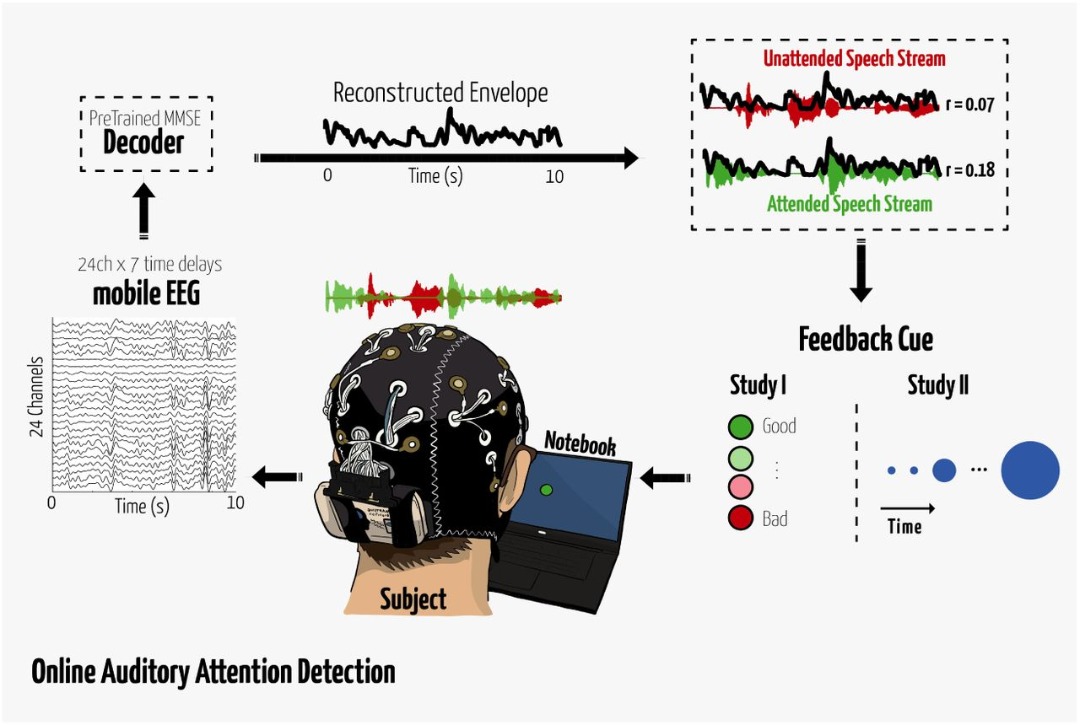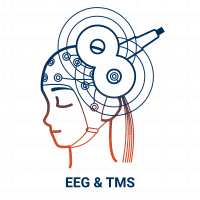eFNIRS
eFNIRS sensor enables you to record functional Near-Infrared Spectroscopy (fNIRS) from 8 channels. A magnet holder mounts the eFNIRS sensor to eCapflex or eCapfabric and this allows record of EEG and fNIRS at the same time.
fNIRS sensor
What is BCI?
Brain-Computer Interface (BCI) is a communication channel between a human brain and a computer, which detects changes in brainwaves that are caused by mental activity, and transforms them into control signals. These control signals can be used to improve disabled patients lives by making daily activities, including moving objects, opening and closing doors, changing TV channels, etc., possible. Consequently, using a BCI system helps people with limited abilities to communicate with their environment and increases their independence. Besides, another main utility of BCI systems in motor rehabilitation after stroke.
Smart Box Highlights:
An efficient ERP acquisition system:
ERP (Event-Related Potentials) are small Changes in scalp recorded EEG that are time-locked to an onset Auditory or visual stimulus. ERP is used to investigate the process of information in the brain.
In ERP recording results, there is a time gap between stimulus presentation and the point of “Max” value (peak). Presumable components in the laptop that the time-gap or delay occurs are; CPU, motherboard, and graphic card. This delay depicts the time taken by the stimulus information to generate the ERP results.
To prevent this pause and get a precise result in a recording; We have designed a module in our eWave+ that omits the delay and enables the ERPs recording to happens in real-time and leaves no gap between stimulus presentation and the subject’s experience.
Other ERP acquisition systems record ERP as command executes from the monitor, except eWave+, which records stimulus presentation synchronously in ERP Results. This exclusive feature only exists in eWave+ and makes it the most explicit ERP acquisition system in the world.
ScienceBeam is offering various solutions for BCI applications, no matter which ScienceBeam device best matches your requirements, Smart Box is an evaluation board compatible with your device and provides a complete BCI solution for you.

Auditory Brainstem Potentials ABP
Auditory brainstem responses (ABR) or brainstem auditory evoked potentials (BAEP) are early – short-latency – EEG components, evoked by acoustical stimulation.
The name refers to the generators: these components are mainly – however not exclusively – originated from the brainstem, relatively far away from the EEG electrodes. Furthermore, the ABRs are characterized by small-amplitude – below 1 µV – and short-latency – five to seven peaks within 10 m
MoBI (mobile Brain/Body Imaging), mobile & wireless EEG
Mobile / wireless EEG applications and MoBI (Mobile Brain/Body Imaging) have become increasingly popular over the past few years. More and more scientists wish to push the boundaries of their EEG research and get answers to questions like What does the brain do when the subject is moving (e.g. during a skydive or when running or cycling)?
In other words “recording EEG under more exceptional and unusual conditions” is on the rise. Unusual conditions again, simply means that the traditional approach of conducting EEG experiments in a lab or shielded cabin or making sure that the subject moves as little as possible during the recording, are abandoned.
Due to the continuous enhancement and refinement of EEG equipment previous limitations of recording EEG are overcome. Comfortable, closely fitting, and robust electrode caps that can be prepared quickly as well as light and small, wireless but still rugged amplifiers are opening up new fields to perform EEG experiments (e.g. outdoors).

Sleep is generally characterized by a reduction involuntary body movement decreased to a little reaction to external stimuli, loss of consciousness, a reduction in auditory receptivity, an increased rate of anabolism (the synthesis of cell structures), and a decreased rate of catabolism (the breakdown of cell structures). The capability for arousal from sleep is a protective mechanism and also necessary for health and survival.
Sleep progresses throughout the night in cycles of REM and NREM phases. In humans, these cycles are approximately 90 to 120 minutes long and each phase may have a distinct physiological function. Drugs such as alcohol and sleeping pills can suppress certain stages of sleep (see Sleep deprivation). This can result in a sleep that exhibits loss of consciousness but does not fulfill its physiological functions.
In REM sleep, the brain is active and the body inactive, and this is when most dreaming episodes occur. REM sleep is characterized by electroencephalography (EEG) that has low voltage and mixed frequencies, similar in appearance to the awake EEG. During REM sleep the sympathetic nervous system is active, but there is a loss of skeletal muscle tone and our muscles are paralyzed so that we don’t act out our dreams.
In NREM sleep, the body is active, while the brain is relatively inactive compared to REM sleep, and there is relatively little dreaming. Non-REM encompasses four stages; stages 1 and 2 are considered ‚light sleep‘, and 3 and 4 ‚deep sleep‘. They are differentiated solely using EEG and unlike during REM sleep which is characterized by rapid eye movements and a relative absence of muscle tone, during NREM sleep limb movements are quite frequent, and sleepwalking (parasomnia) can occur in non-REM sleep.
EEG & TMS / EEG & Brain Stimulation
Transcranial magnetic stimulation (TMS) is a non-invasive method for exciting neurons in the brain. The excitation is caused by electric currents induced in the tissue by rapidly alternating magnetic fields (electromagnetic induction). In this way, brain activity may be triggered or modulated without surgery or externally applied electrodes. This technique is used to study the circuitry and connectivity of the brain. Repetitive transcranial magnetic stimulation, known as rTMS, may produce longer-lasting changes in electro-cortical function.

Click one of our contacts below to chat on WhatsApp